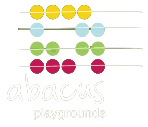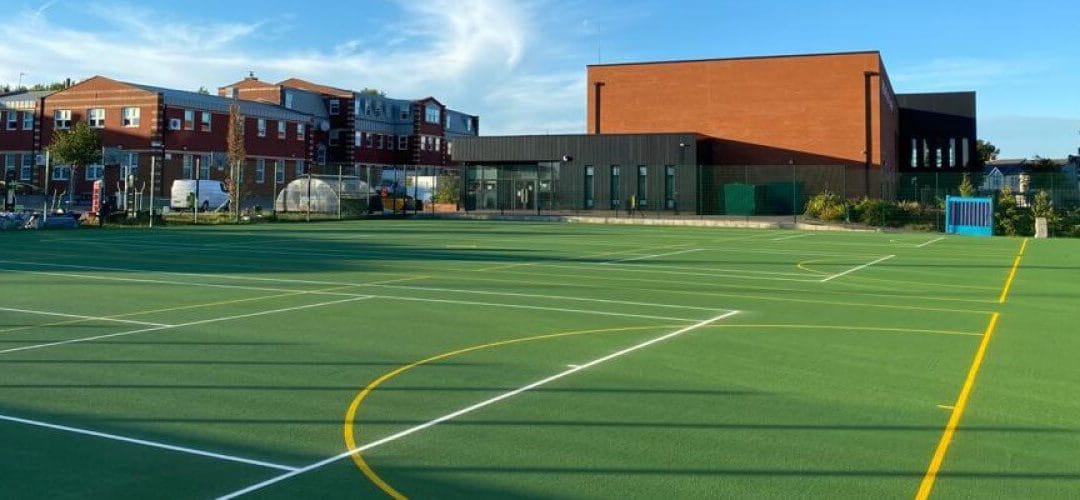Multi-use games areas (MUGAs) are a valuable addition to any well-designed public play space. Whether placed in a park, adjacent to a school, or within a new residential development, these facilities offer a versatile way to promote physical activity, structured sports, and community engagement.
But the quality and longevity of a MUGA depend heavily on its surfacing. From performance and safety to durability and visual impact, surfacing decisions made during the design phase influence how well the space functions long term.
Multi-use games area (MUGA) surfacing is key to performance, safety, and durability in public play spaces. Landscape architects can choose from polymeric, macadam, or artificial grass surfaces based on sport type, footfall, and design goals. The right surface ensures long-term use, accessibility, and compliance with safety standards.
This guide has been created specifically for landscape architects looking to specify multi-use games area surfacing in public schemes. It outlines the most effective surfacing options, the key considerations that shape good design, and how to ensure your specification meets usage and compliance requirements.
Understanding Multi-Use Games Area Surfacing
MUGAs are purpose-built spaces designed to accommodate a range of sports, such as football, netball, basketball, hockey, and tennis. Their popularity in public spaces stems from their multi-sport flexibility, small footprint, and potential for year-round access.
The term multi-use games area surfacing refers to the specialist materials installed underfoot. These materials must:
- Withstand repeated use across multiple sports.
- Provide adequate grip and impact resistance.
- Offer clear line markings for gameplay.
- Drain effectively to enable all-weather use.
- Be durable, low-maintenance, and visually appropriate for the surrounding environment.
For architects working on public sector or community schemes, the surfacing must also meet specific safety and accessibility standards while delivering value over its expected lifespan.
Key Surfacing Options for MUGAs
There is no one-size-fits-all solution when it comes to multi-use games area surfacing. The most suitable material depends on the sports being played, the budget available, the expected footfall, and the aesthetic context of the space.
Here are the main surfacing types used in MUGA design:
1. Polymeric Surfacing (Type 3 or Type 4)
A popular choice for sports like netball, basketball, and five-a-side football. Polymeric surfacing is made from rubber granules bound in resin and laid in a continuous layer over a tarmac base.
Key benefits:
- Excellent shock absorption and slip resistance.
- Suitable for high-impact sports.
- Durable and flexible in variable weather conditions.
- Available in multiple colours with permanent line markings.
Best suited to: Schools, parks, community MUGAs with regular, active use.
2. Macadam Surfacing (Porous Asphalt)
Macadam is a strong, hard-wearing surface made from stone aggregate and bitumen. It is often used as both a base layer and a final playing surface.
Key benefits:
- Low-cost option for ball rebound sports.
- Long lifespan with minimal maintenance.
- It can be painted with sport-specific lines.
- Provides excellent water run-off when laid correctly.
Best suited to: Projects with tight budgets, or where vandal resistance is a priority.
3. Artificial Sports Grass
This surface mimics the look of natural grass while offering a consistent and cushioned play surface. It is commonly used for football-focused MUGAs.
Key benefits:
- Visually soft, blends well with landscaping.
- Comfortable for falls and slides.
- Available in different pile heights for specific sports.
- Sand- or rubber-filled to aid performance.
Best suited to: Community spaces prioritising football or low-impact activities.
Factors to Consider in Specification
When choosing multi-use games area surfacing, several design and performance factors should be considered early in the project. These include:
1. Intended Sports and Play Use
Specify based on the sport mix you want to support. For example, polymeric surfacing offers better traction for basketball and netball, while artificial grass may be more appropriate for football.
2. Expected Footfall
Public MUGAs are typically open access, so wear and tear is higher than in school or club settings. Polymeric and macadam both hold up well under consistent use.
3. Site Drainage and Weather Conditions
Permeability is important. Polymeric and porous macadam both allow for good water drainage. Surface pooling must be avoided to prevent injuries and surface degradation.
4. Budget and Lifecycle Costs
Macadam is the most economical in terms of upfront cost. Polymeric offers better long-term value with lower maintenance. Artificial grass has a higher cost and may need infill top-ups.
5. Line Markings and Colour Zones
Accurate, durable line markings are vital for functionality. Consider colour contrasts for visual clarity and potential integration of community artwork or branding.
Surface Compliance and Standards
Landscape architects are often responsible for ensuring surfaces meet safety and performance requirements. Multi-use games area surfacing should align with the following standards, where applicable:
- EN 14877: Performance requirements for synthetic sports surfaces.
- EN 1177: Where MUGA zones overlap with play areas, this standard applies to impact absorption.
- Sport England guidance: Design, layout, and surfacing requirements by sport.
Working with a specialist installer helps ensure that materials, baseworks, edge details, and finish quality all meet required benchmarks.
Integrating Surfacing into Landscape Design
The surface of a MUGA should complement its wider environment. Consider:
- How the surfacing material works with fencing, lighting, and landscaping.
- Whether a natural or bold visual theme is preferred.
- How paths and circulation routes connect to the MUGA.
- The user journey: from arrival and access to resting or spectating.
Multi-use games area surfacing does not need to be confined to a square or rectangle. Creative line work, blended edging, and surface patterning can make the space more inviting and integrated.
The Role of Abacus Playgrounds in Surfacing Specification
At Abacus Playgrounds, we work closely with landscape architects, councils, and contractors to deliver MUGA surfacing that is both high-performance and design-led.
Our support includes:
- Advice on surfacing selection tailored to site conditions and user needs.
- Samples, data sheets, and guidance for specifying materials.
- Assistance with cost planning and installation sequencing.
- Nationwide installation with trained in-house teams.
Whether you are designing a standalone MUGA or integrating it into a larger landscape scheme, we provide the surfacing expertise to ensure the result meets your vision and your project’s performance requirements.
FAQs
Can different surfacing types be used in one MUGA?
Yes. Some designs use macadam for the main surface with polymeric in high-impact zones or artificial grass around the perimeter. The layout depends on your goals and site conditions.
How long does multi-use games area surfacing last?
Polymeric surfaces typically last 10–15 years, macadam even longer. Artificial grass may need resurfacing every 8–10 years, depending on wear. Regular inspection and cleaning extend lifespan.
What is the best surface for wet conditions?
Polymeric and porous macadam both perform well in wet weather due to their slip resistance and drainage capability. Artificial grass also drains well, but may become slippery if not maintained.
Can you refurbish an existing MUGA surface?
Yes. Resurfacing is common and cost-effective. Old macadam courts can be topped with polymeric surfacing or repaired and relined. Our team can assess existing surfaces for suitability.
The success of a multi-use games area depends on how well it serves the people who use it. Surfacing is the foundation of that success, enabling sport, supporting safety, and enhancing the overall experience.
For landscape architects working in public realm design, choosing the right multi-use games area surfacing means understanding not just how it looks, but how it performs underfoot, season after season.
By partnering with an experienced specialist like Abacus Playgrounds, you can deliver a sports space that is visually considered, technically compliant, and built to last.
To discuss your next MUGA project or request technical surfacing advice, contact the Abacus Playgrounds team. We are ready to support your design with materials and knowledge you can trust.

